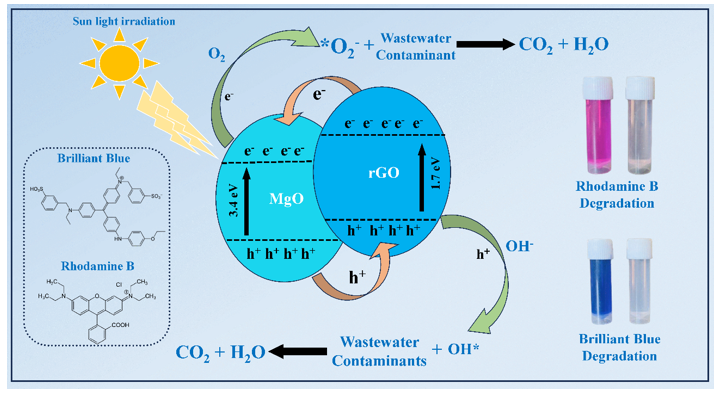
The increasing prevalence of hazardous dye wastewater from the printing and packaging industries poses significant environmental and health challenges. Conventional water treatment technologies often fall short of effectively removing these complex contaminants. This study explores the formulation of magnesium oxide (MgO) nanoparticles using Helianthus annuus (sunflower) leaf extracts and their integration with reduced graphene oxide (rGO) to form MgO-rGO nanocomposites. The biosynthesis method employed is cost-effective and environmentally friendly. The synthesized nanocomposites were characterized for their physicochemical properties, including structural, morphological, and optical characteristics. The photocatalytic commotion of these nanocomposites was assessed through the deprivation of cationic Rhodamine B and anionic Brilliant Blue dyes under sunlight irradiation. The results highlight the potential of MgO-rGO nanocomposites as effective photocatalysts for industrial wastewater treatment, exhibits an effectual resolution for the printing and packaging industry.
Total file downloads: 18